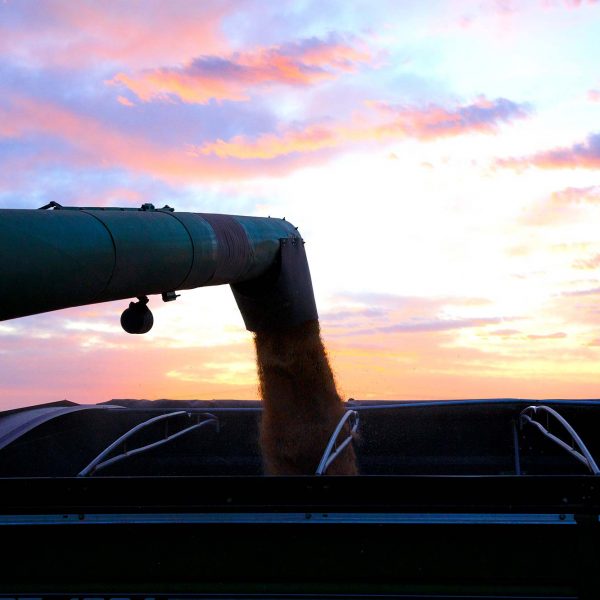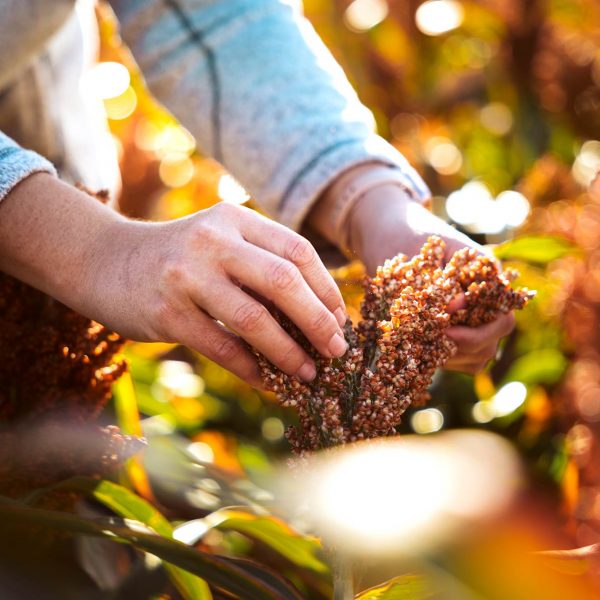Forage Sorghum and Sugarcane Aphids
By Sorghum Checkoff Agronomy Director Brent Bean, Ph.D.
Unlike grain sorghum, there are only a few forage sorghum hybrids that have sugarcane aphid (SCA) tolerance. With the exception of these few, at best, all we can say is that certain hybrids are less susceptible than others. On a positive note, companies have been working to incorporate SCA tolerance into their forage sorghum, particularly those used for silage. It is expected that SCA-tolerant silage sorghum hybrids will be introduced to market in the coming years.
In sorghum silage, Texas A&M University research has shown yield can be reduced as much as 40 percent prior to sorghum flowering if a high infestation of SCA occurs and is left uncontrolled.(1) Additionally, quality of the silage is reduced, primarily because of a reduction in starch due to lower grain production. Both silage yield and quality are affected much less if SCA infestations occur after the grain milk stage. However, late infestations can produce honey dew in sufficient quantities which could interfere with harvest.Forage Sorghum
The insecticides labeled and most recommended for use in forage sorghum are the same as those used in grain sorghum. These are Corteva’s Transform and Bayer’s Sivanto Prime, and its soon-to-be replacement, Sivanto HL. The label for Sivanto HL includes a soil applied application. This is new and will be especially useful in forage sorghum. A third product, Sefina from BASF, recently received a federal label for sorghum with state labels expected soon.
Management Practices to Avoid or Minimize SCA Damage
Sorghum Silage
- Plant early with an early maturing hybrid and hope to harvest prior to SCA infesting the field.
- Avoid planting in narrow rows. Use at least a 30-inch row, which allows better coverage if an insecticide application is needed.
- Insecticide coverage is critical. If SCA populations are beginning to increase prior to canopy closure, consider making an insecticide application even if levels have not yet reached an economic threshold.
- Consider applying by chemigation (labeled for Sivanto) when possible for improved insecticide coverage.
- In regions where SCA infestations are a regular occurrence, consider applying Sivanto HL in the seed furrow at planting or other soil application methods as stated on the label.
Sorghum Sudangrass Hay
- In regions where early season SCA infestation may occur, consider using an insecticide seed treatment such as Cruiser, Poncho or Gaucho, which will provide early season control for roughly 40-45 days. This is especially important if the planting date is delayed.
- If SCA infestation occurs and canopy closure is such that good insecticide application coverage cannot be achieved, consider harvesting early and monitoring regrowth forage for SCA. Apply an insecticide as needed prior to canopy closure.
Grazing
- Using good management grazing practices will go a long way in managing SCA. This means turning cattle out to graze sorghum no taller than 40 inches or approximately 40 days after emergence. Rotational grazing should also be an effective management tool.
- If SCA infestation levels begin to build, consider treating as soon as possible to achieve good insecticide coverage. High levels of SCA will result in moldy leaves and cattle will avoid grazing these areas leading to wasted forage.
- There is a seven-day grazing restriction following a Transform or Sivanto application.
Reference:
Ed Bynum and Jourdan Bell. 2019. Sugarcane Aphid Damage to Forage Sorghum Silage Yield and Quality induced by different Infestation Levels for the Texas High Plains. TGSP Final Report. https://www.sorghumcheckoff.com/our-farmers/forage-production/.




